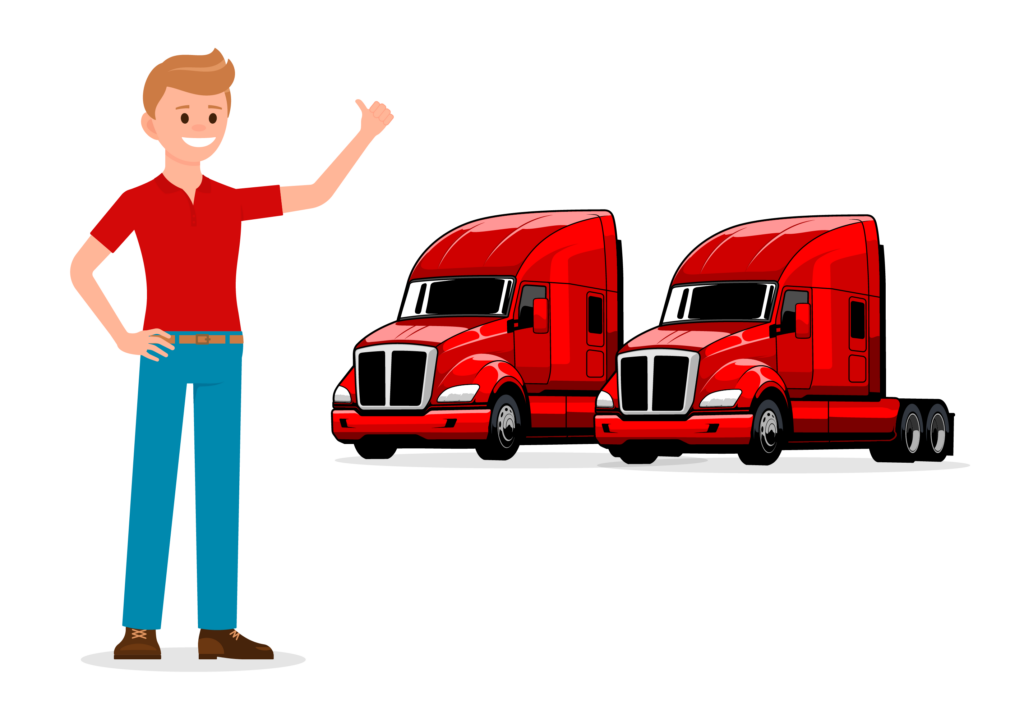
As you might already know, build rates and new equipment sales for tractor trucks are down, and they’re predicted to stay that way for most of 2024.
The freight industry has slowed and carriers have stopped making large order commitments.
If you’re a heavy truck dealer, that can put a strain on your business. But just because your new semi-truck and trailer sales are down, doesn’t mean your used equipment sales need to take a nosedive with them. Used equipment is going to be a hot commodity for trucking fleets that need to replace their equipment at a lower cost.
You need a way to turn your lot quickly, so you can get the most value out of your older models.
With RigDig BI, you can find a list of potential prospects that are most likely to buy used big rigs and learn everything you can about those leads to quickly and easily close the sale. Let’s take a look at how a heavy truck dealer might use RigDig BI to quickly offload their used pieces of equipment.
The Problem
Here’s a scenario that might be pretty familiar to you: Our fictitious Used Truck Sales Manager, Ken Worth, works for a (equally fictitious) three-location trucking equipment dealer in the Midwest, selling trucks to fleets in Wisconsin, Minnesota, and Illinois.

Ken knows that the moment used trucks hit the lot, their value starts to decline. That means he only has a limited amount of time to get the highest price he can for his used equipment, so Ken needs to find buyers fast.
In order to sell all his used trucks, he needs to not only find buyers who might have an interest in buying used, but he also needs to find fleets that would be interested in the models he sells and fleets who are ready to replace their old equipment.
The Solution
To start, Ken uses RigDig BI to find buyers in his region who have previously purchased the trucking model he’s trying to sell. Then he looks at buyers who have equipment with a high average age, and ensures that prospects leasing owner-operators are filtered out of the list, so he can focus on businesses that purchase equipment.

In the end, Ken is able to research prospects in his AOR and narrow down that list to a combined 1,126 potential buyers in his states that are primed for a new, used truck.
How Ken Did It
Here’s a breakdown of steps that Ken took to in RigDig BI to find his list of potential truck buyers:
1. Targeting the Right Equipment
Inside RigDig BI, Ken has access to data for all the states in his AOR: Wisconsin, Minnesota, and Illinois. Without any tweaking to the data’s filters, he starts off with about 26,000 prospects that own truck tractors.
That’s a bit too much.
So first, he narrows down the list of potential buyers by targeting a specific vehicle model: the T680. Ken has about six of those models from 2019 and he’s hoping to get rid of them first.

Under the Vehicle Equipment tab, Ken selects “Vehicle Model” and chooses the T680. Immediately, his list of potential buyers drops from 26,000 to 3,754. That’s a lot more manageable, but Ken knows he can narrow that down even further.
2. Filtering Out New Equipment and Owner-Operators
In order to find those who might be willing to buy a used piece of equipment, Ken needs to find businesses who already use older truck models. Those who are already familiar with operating and maintaining models that aren’t covered under a warranty are more likely to purchase those types of vehicles again, compared to those who tend to frequent new equipment.
He also wants to make sure that the truck buyers in his list purchase equipment themselves and don’t rely too heavily on owner-operators or the leasing of vehicles. That way, Ken continues to narrow down his list of businesses who are more likely to buy his used trucks.
To start, Ken goes to the Fleet Preferences & Brand Loyalty tab and selects the “Vehicle Average Age” filter. He checks the boxes to include any average age that’s older than four years. This means, the data will only display prospects that operate vehicles in their fleet with an average age of five years or older.
Then, he scrolls down a bit further and selects the “Leased Operators or Vehicles” filter and checks the box for “0 – 24%”. This box allows Ken to filter out any business that leases 25% or more of their vehicles, meaning those left on the list are more likely to purchase their own trucks and equipment.
Lastly, to ensure the data is as helpful as possible, Ken navigates to the “Previously Operated Vehicles” filter and checks the boxes for High and Medium. This means that anyone left on the list will have a medium or high preference to owning and operating used vehicles in their fleet.
After checking all these boxes and filters, Ken narrows down his list even further from 3,754 prospects, to 1,126.
3. Breaking Up the Rest of the List
Now over one thousand prospects still seems like a lot to sort through. But remember, Ken manages dealerships in three different states. That means, from here, he can start organizing the data by state to give to his various sales teams.
Breaking that down, that’s 208 prospects for Wisconsin, 682 for Illinois, and 236 for Minnesota. Those are much more manageable lists for each of those regions. In fact, Ken manages multiple dealerships in Illinois, so he could break down that larger list even more by using RigDig BI to filter for specific counties within the state and get even more granular with his data.
Trying Other Strategies
From here, Ken has a lot of options to help him sell all of his used equipment. But he can use RigDig BI with other strategies too.
For instance, he can replace the filter of the T680 for any used model currently on his lot. He can even try selecting a specific engine model, like Cummins, and filtering prospects who are loyal to that particular model of engine in their used-equipment fleet.
Using this information, Ken can get to know his prospects better before contacting them about the vehicles he sells, giving him an upper hand in the sales conversation.
Don’t let your sales slip by. Instead, be like Ken.
Use RigDig BI to learn all you can about your prospects and find the perfect buyers for the vehicles and trucking equipment you sell. Learn more about how RigDig BI’s data can boost your sales.
